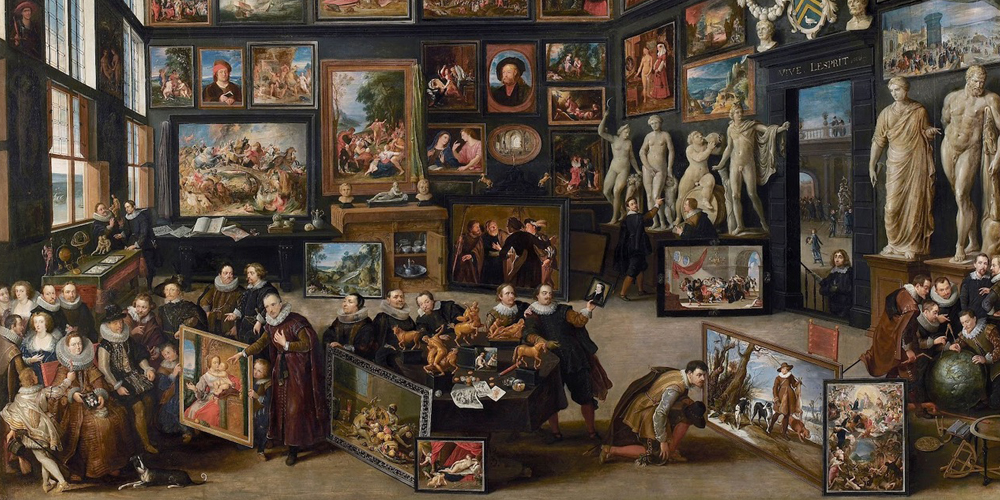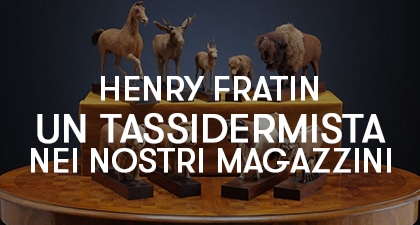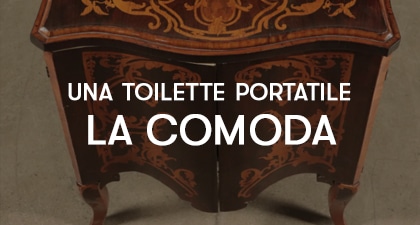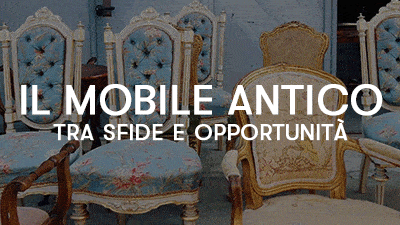Brief History of Collecting

Collecting objects and works of art is an activity practiced by humans since antiquity that has developed over the centuries, closely connected to the social and cultural evolution of different eras.
While initially primarily linked to religious needs
– for example, consider the burial goods in Egyptian tombs and the variety of sculptures within Greek temples – over time, the accumulation of works began to serve political purposes, as a demonstration of one’s power.
As a result, the display of collections became necessary, with these being viewed by a public that appreciated their artistic quality as well.
In Roman times, private individuals began to practice collecting as well, placing statues within their gardens and private homes, removing their spiritual function in favor of aesthetic attention.

During the Middle Ages, we see a return to the close connection between art and religion.
The main places for collecting art are those related to worship, such as churches. In this context, the display of artistic goods is fundamental as a teaching aid for Christianity, and the use of precious materials like gold or stones signifies devotion.
The birth of modern collecting began to take shape in the 15th century, when lords collected art objects solely for their aesthetic qualities and displayed them in spaces dedicated specifically for this purpose.

However, the desire to showcase one’s power remained constant, through the ability to acquire valuable artifacts or secure the services of renowned artists. In the following century, this practice consolidated through the spread of galleries and picture collections, which were opened to an increasingly wider public, although still primarily consisting of nobility.
As a result, there was a substantial change in how works were displayed: it was no longer enough to satisfy the aesthetic taste of the owner, but also that of everyone who had access to the collection. In these years, the Wunderkammern, “Chambers of Wonders,” also emerged in Northern Europe, gathering mirabilia, or objects designed to amaze visitors, such as rare or unusual specimens of natural history or artifacts.

In the following centuries, object collecting increasingly became a public activity: the collections of princes and lords were taken over by emerging states or were exhibited in spaces close to the modern concept of a museum, with set opening times and thus accessible to the public, who could enjoy and learn about the artistic traditions of their culture.
Today, collecting continues to be a widely practiced activity that has reached specialized levels thanks to the vast and heterogeneous offerings.
Expanding more and more, the art market is able to satisfy the requests of buyers and meet various budget needs, making collecting a democratic activity accessible to many.
The main difference from the past is that it no longer has an elitist character: it is potentially accessible to anyone who wants to enjoy masterpieces of art or important and sought-after antique furnishings.
To this end, from November 8 to 10, our store in Milan will host a weekend dedicated to collecting.
A three-day event dedicated to Art and Antiques, within which will take place the cultural initiative “Collecting Beauty“, a meeting with art historian and critic Maria Silvia Proni, where the origins of collecting will be discussed, why people collect, how to create a collection, and who the collector is.
Collecting on the big screen with “The Best Offer” by Giuseppe Tornatore







